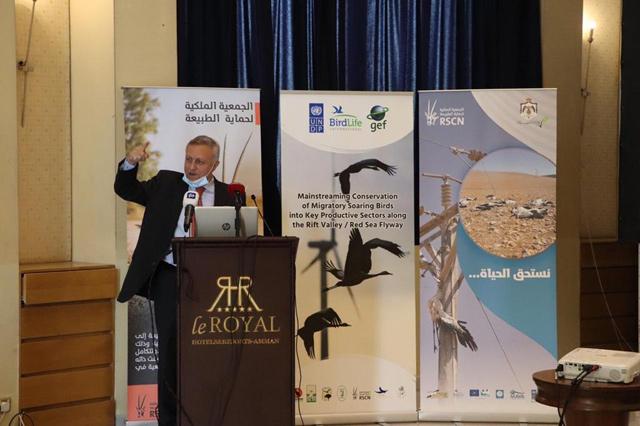- Local News
- Mon-2021-06-14 | 01:50 pm

Nayrouz News Agency :
The Royal Society for the Conservation of Nature (RSCN) together with the Ministry of Environment on Sunday organised a national dialogue session on environmental policies in the power sector and the insulation of electrical networks.
Attended mainly by Environment Minister Nabil Masarweh, RSCN President Khaled Irani, RSCN Director General Yahya Khaled, Regional Director of BirdLife International Ibrahim Khader, power sector and media representatives, the session shed light on global best practices in the area of electrical insulation in order to protect migratory birds.
The dialogue session witnessed a discussion aimed to develop the environmental policies of the energy sector, as well as to concentrate efforts on the formulation of the national plan to insulate electrical infrastructure that represent a serious risk of bird electrocution.
In his opening statement, Masarweh pointed out that "Jordan is regarded as one of the pioneering countries in the area of environmental protection”.
He added that the Jordanian government attaches great importance to protecting migratory birds, especially given that Jordan lies on one of the most vital bird migration paths in the world.
"The protection of migratory birds is a humanitarian and national imperative,” the minister said, noting that the Kingdom has signed numerous international agreements aimed to protect migratory birds.
The migratory birds are "a strong evidence of ecological efficiency” in Jordan, according to the minister.
During the session Irani said that the RSCN, after being alerted to the social and economic implications of birds’ collisions and electrocutions at power lines, has identified the dangerous areas in Jordan where bird electrocution mostly happens.
"Through field surveys at the national level, The RSCN in conjunction with BirdLife International, has identified Jafar Line in Maan as one of the areas posing risk for bird electrocution,” according to Irani.
He pointed out that the RSCN in the future aims to develop national strategies for eliminating the risk of bird electrocution, in addition to developing a training programme, in order to implement those procedures.








